Many people think that a landing page is the same thing as a product page or a regular ol’ website page — but they are so much more. So what are the differences between a landing page versus product page? I’ll start by explaining the two.
Landing page versus Product Page — A Comparison
A landing page is specifically designed for a marketing campaign with the single purpose of driving traffic to convert leads. A landing page removes the distractions of a regular product page, by focusing on only one message, with one goal in mind. The key to a successful landing page is that it has a single purpose and not multiple messages. Landing pages with multiple offers get 266% fewer leads than single offer pages.
A product page (or webpage) is designed to provide information for the user, usually about a product and/or service. The content is typically general, as its mission is to appeal to the masses. It should introduce your brand, educate your customer on your product, and provide links to other places on your website to help the visitor navigate to an area of interest.
When Should You Use a Landing Page versus a Product Page?
Uses of a Landing Page versus a Product Page
Product pages are used to provide users with information about your product, service, or brand. On the other hand, landing pages are created to generate leads related to a specific marketing campaign.
Landing pages are especially effective as they remove the distractions of a regular webpage and place the focus entirely on the task at hand — getting your potential customer to become engaged with your brand.
The engagement happens when you collect email addresses of the potential leads in exchange for something of value like a free eBook download or an invitation to a free webinar. These are now potential leads that you can send targeted information to, such as:
- eBook, white paper or data sheet
- Entry into a contest
- Event sign-up
- Promotional offer
- Registration to receive additional email newsletters
- Attendance to a free webinar
Is there a particular number of landing pages that you should be creating? No, not really. Many marketers elect to build a new landing page for each marketing campaign. And for good reason. Websites with 30 or more landing pages generate seven times the leads of a website with fewer than 10 landing pages.
“Websites with 30 or more landing pages get seven times the leads of a site with only 10.”
— Wishpond
So, what works? Here are few of my favourite landing page ideas:
Click-Through Landing Page
A click-through landing page is a simple page in between your ad and your shopping cart. It directs the user from the landing page directly to the purchase page.
Lead-Capturing Landing Page
I love lead-capturing landing pages. As a marketer, I use these a lot for my inbound marketing campaigns. The purpose of a lead-capturing landing page is to gather email addresses.
How is this done?
By providing the potential customer with an incentive — such as an eBook download, registration to a webinar, or newsletter signup — in exchange for the user’s personal information (e.g., their name and email address). Marketers use lead-capturing landing pages to build their audience lists and send targeted information to them.
Here’s one of our own lead-capturing landing pages that we created for PayPal’s Mobile Optimization Initiative.
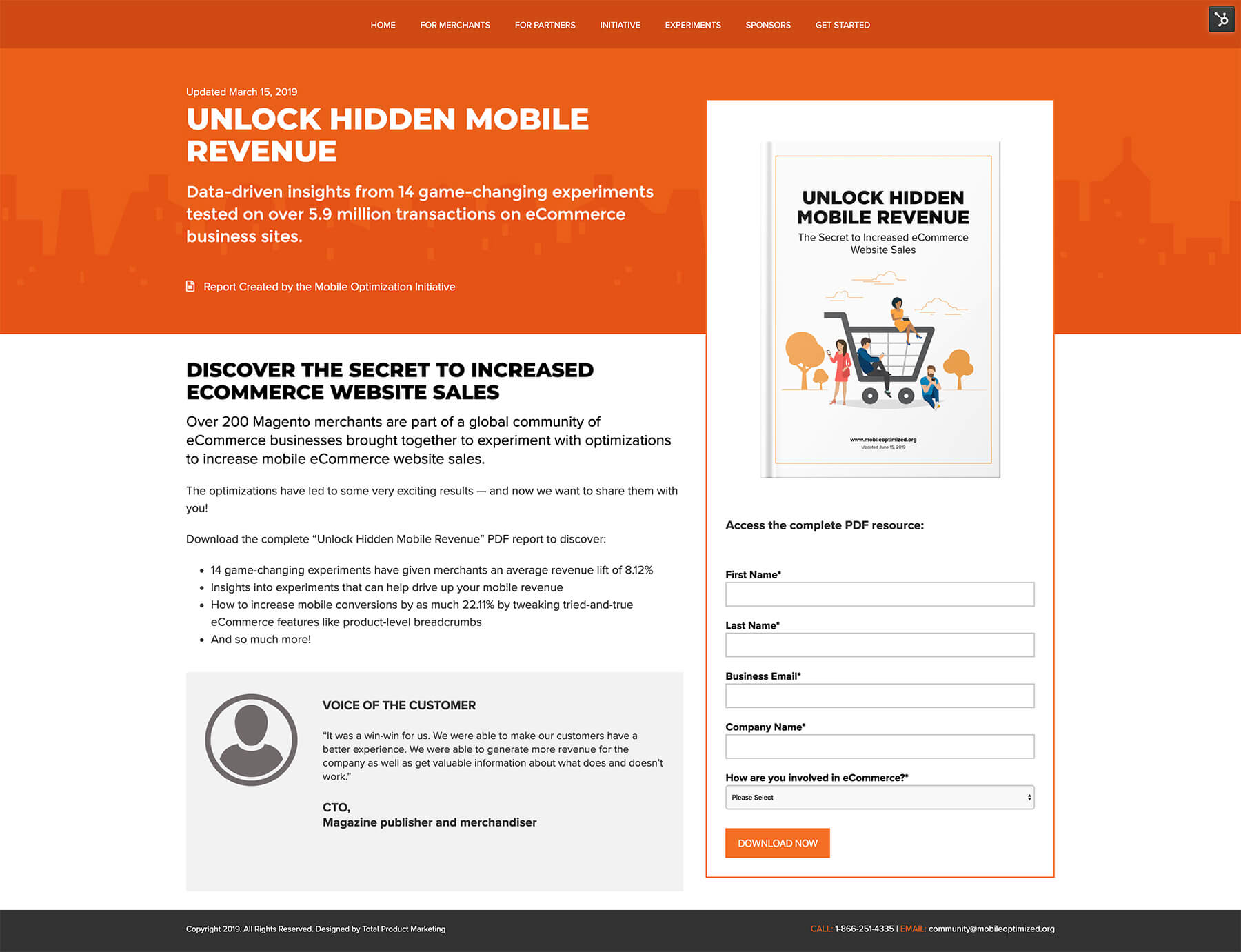
Microsite
A microsite is a small supplementary website that is meant to function as its own entity within an existing website. A microsite’s main landing page usually has its own URL. Marketers usually use this for large campaigns, for example, a brand launch or a popular product launch.
Domino’s Pizza created a great microsite a few years back to announce their new Chevy Spark pizza delivery cars (each of which were fully customized for transporting pizza). The microsite was created to show off the awesomeness of its new fleet.
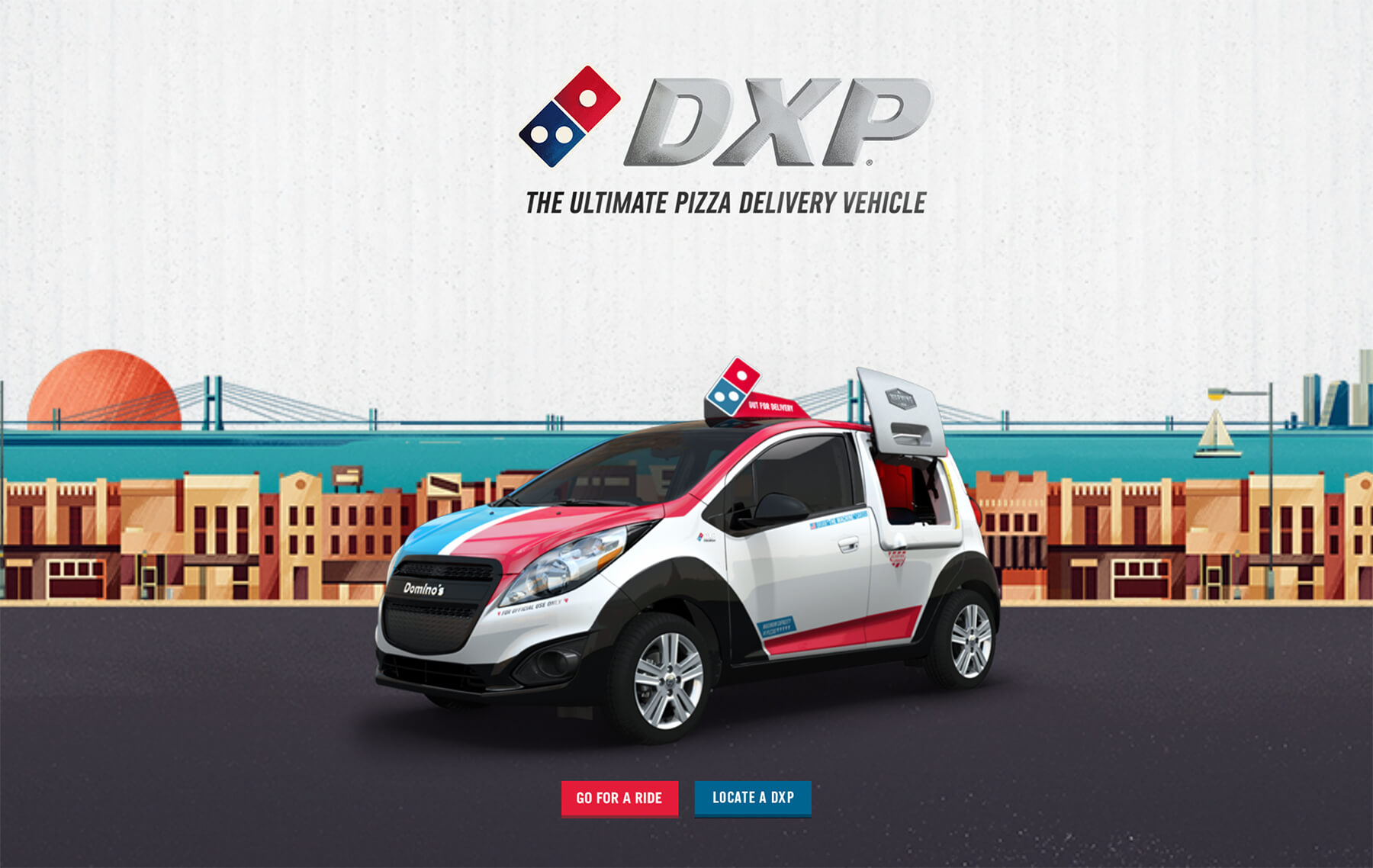
Thank You Landing Page
A thank you landing page is simply the page that a user is directed to after they submit a form or opt-in. Not only are these types of landing pages a great way to further connect with users, they offer the opportunity to engage users with additional content. Just take a look at this example from Optimizely. The page offers a nice thank you and then takes things a step further by offering the user additional content they may enjoy.
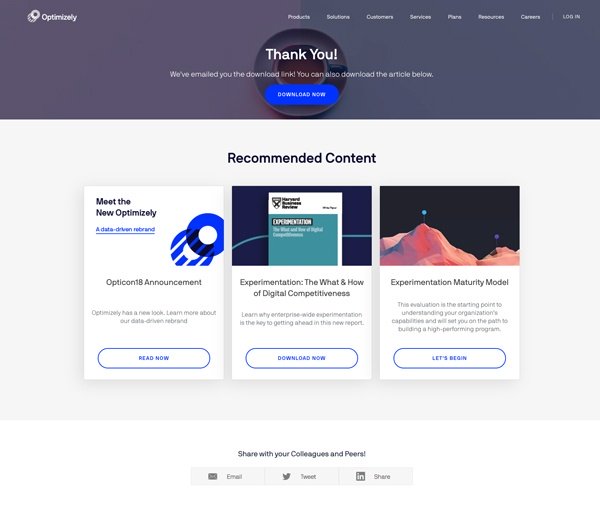
Unsubscribe Landing Page
Chances are you’ve encountered a few of these in your digital life. Unsubscribe landing pages are those pages a user is redirected to after unsubscribing from a brand’s content. Take a look at the following example from Barkbox.
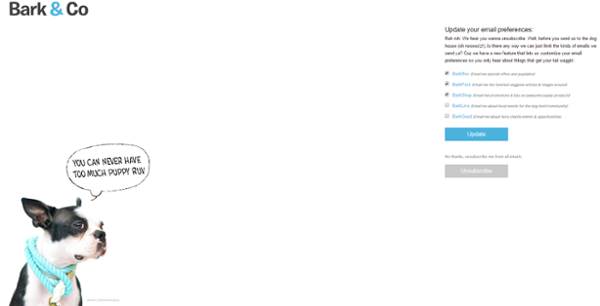
My favourite unsubscribe landing pages are those where the company doesn’t take the user’s decision personally and offers a witty parting message to make the user second guess their decision to leave. Here’s a great example from Email Upplers.
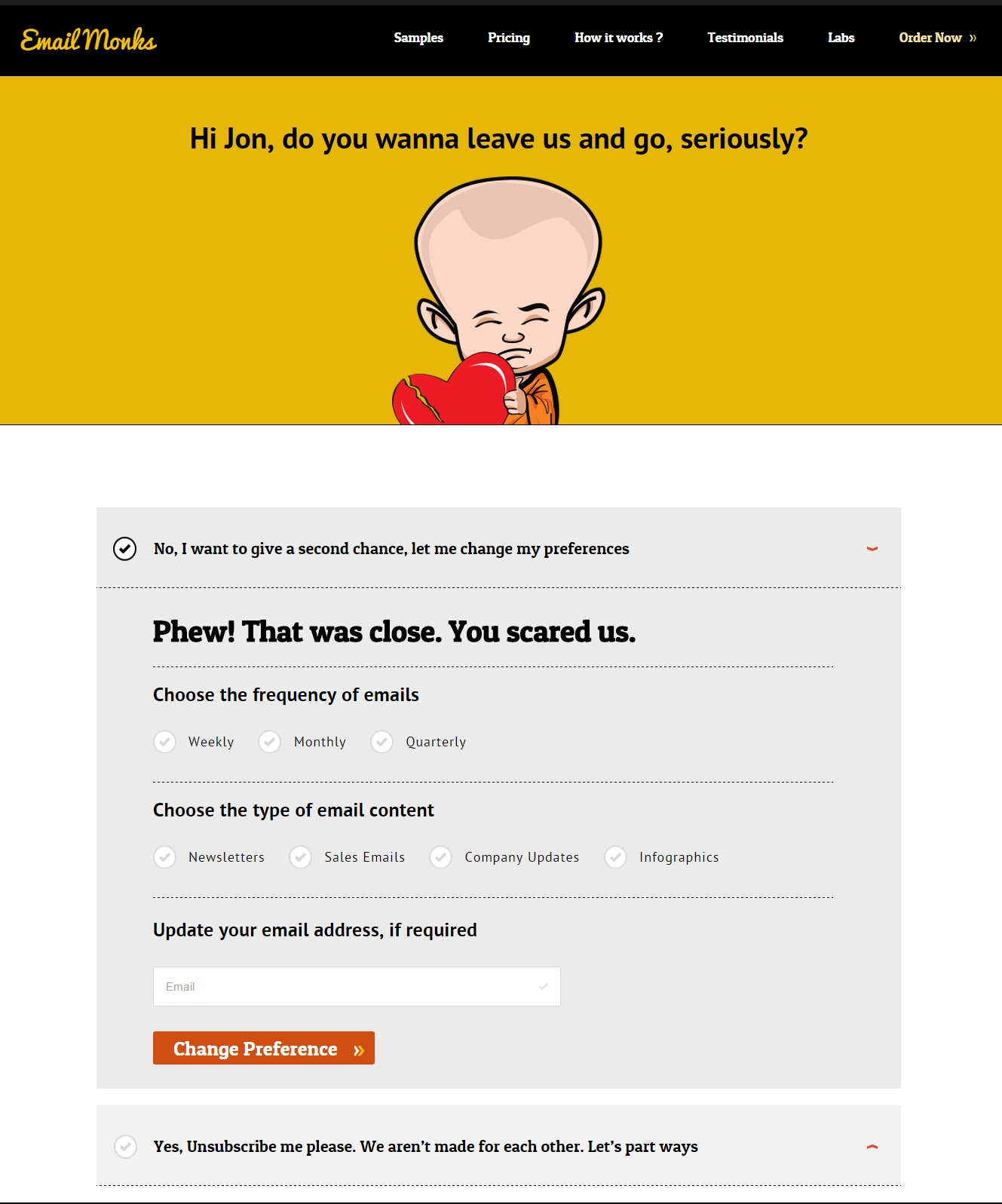
Video Landing Page
If your marketing campaign includes a video, it will need a landing page.
Dollar Shave Club created a killer viral video several years back. A key component of the video’s success is its ease of sign up, created through the ‘DO IT’ button. By removing a form field, Dollar Shave Club engages users through the entertaining video and hooks them with the easy one-click sign up.
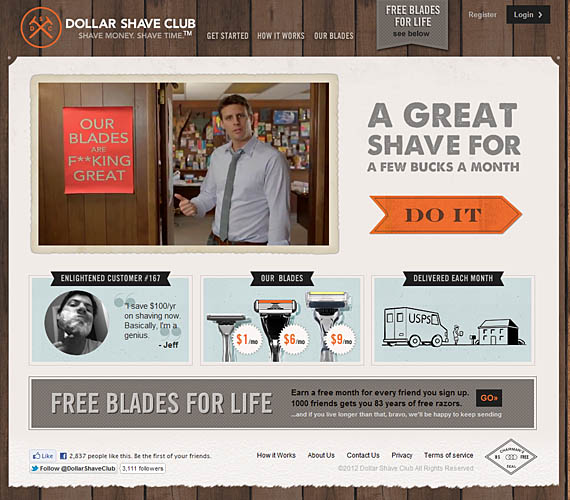
Takeaways
Landing pages and product pages are some of a marketer’s most useful tools. But remember, they’re both designed for very different purposes. Here are a few helpful takeaways to make sure you’re making the best of both tools:
- Use a landing page if you’re launching a specific marketing campaign or promotional offer
- Make sure your landing messaging is simple and easy-to-follow (multiple messages will confuse your audience, and possibly even turn them off)
- Turn to a product page when featuring your product or service details, or if you need to highlight several messages at once
- When promoting your landing page on other platforms (like social media) make sure your messaging matches across all platforms
Need help building your landing pages? Our team at Total Product Marketing is here to help. Get in touch today to learn more.
